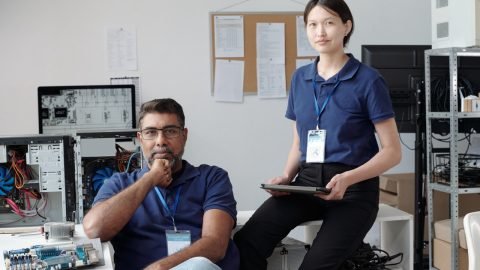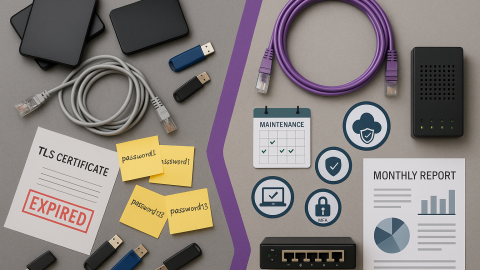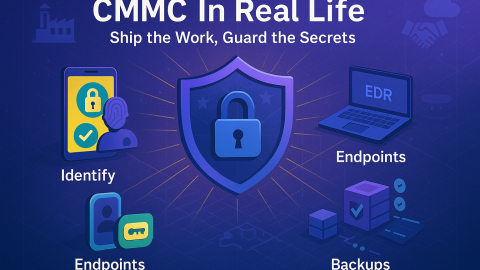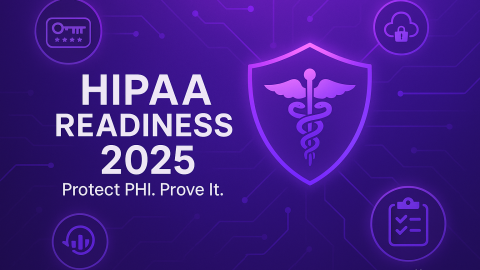Phones grew up while nobody was looking. The closet full of humming gear turned into a softphone on a laptop, a clean app on a mobile, and a carrier connection that lives on the same networks as everything else you do. If your voice system still feels like a time capsule, 2025 is a good year to bring it forward.
The network finally learned to carry a conversation
For a long time VoIP quality depended on how kindly the network treated real time traffic. That relationship has matured. Modern wireless is faster at scheduling airtime and more graceful when the air gets crowded. Newer access points and clients can use multiple bands at once, which trims the jitter that used to turn a sales call into a guessing game. If your Wi Fi is older than the phones people carry in their pockets, voice will keep reminding you.
Calls that start quicker and keep going
Transport is evolving too. Newer protocols are better at fast handshakes and recovering when packets wander off. You notice it in little ways. Calls connect without the awkward pause. A brief hiccup on the internet feels like a shrug instead of a stutter. You do not have to chase every fresh draft of a standard, but it helps to choose platforms that can adopt what is coming without a forklift.
Identity and fraud grew up as well
Caller ID used to be easy to fake. That is why your warehouse sometimes received a call from you. Today call authentication is a first class feature across carriers. It is not a magic shield, but it gives the network a shared language for saying this call looks real and that one does not. Your users feel the difference when the number on the screen can be trusted again.
The unsung gear that keeps order
Session border controllers are the air traffic control of voice. They terminate SIP trunks, normalize quirky signaling, and keep media flowing when the wider internet is having a mood. If you are moving from old trunks to SIP, this is the piece that prevents finger pointing at four in the afternoon on payroll day. It is also the place where you can see what is really happening when someone sounds like a robot.
911 that knows where people are
Modern voice has to do more than make sound. It has to guide help to the right place. Direct 911 dialing, on site notifications, and dispatchable location are not bolt ons anymore. If your workforce is hybrid, location needs to travel with the person rather than live on a sticker under a desk phone. Getting this right during an upgrade is far easier than trying to retrofit it after a close call.
Quality is now about people, not ports
Endpoints default to wideband audio. Noise suppression and transcription make meetings feel less like chores and more like conversations. Presence, queues, and voicemail follow the person instead of the wiring closet. On the carrier side you can burst capacity for a campaign, fail over numbers during an outage, and keep business running when weather or a backhoe interrupts your plans.
How to approach an upgrade without breaking the day
Start with the outcome you actually want. Clearer audio in busy offices. Reliable emergency calling for a hybrid workforce. Fewer outages from carrier trouble. Say those goals out loud and measure every design choice against them. Bring your wireless and networking teams in early because voice is only as good as the network that carries it. Remember that numbers must port, fax still matters in some industries, and contact center features can surprise finance if they are not part of the conversation. Test 911 from places where people really work and let your safety team listen in. That is how you find the floor maps that do not match reality.
Where Affant fits
Affant’s job is to make the upgrade feel unremarkable in the best possible way. We map how you dial today, design for call quality on the network you actually have, satisfy location and notification requirements for people at desks and people on the move, and help you choose carriers and controls that stay calm during outages. Different environments need different levels of help. We match the pace and depth to yours and leave you with documentation that leaders and auditors can understand.
Bottom line: a 2025 VoIP upgrade is not a rip and replace drama. It is a careful refresh that uses better wireless, smarter call authentication, and location that follows the user so your phones finally sound like the century you work in. If you want a second set of eyes on architecture, carriers, or 911 design, Affant is ready to talk.











